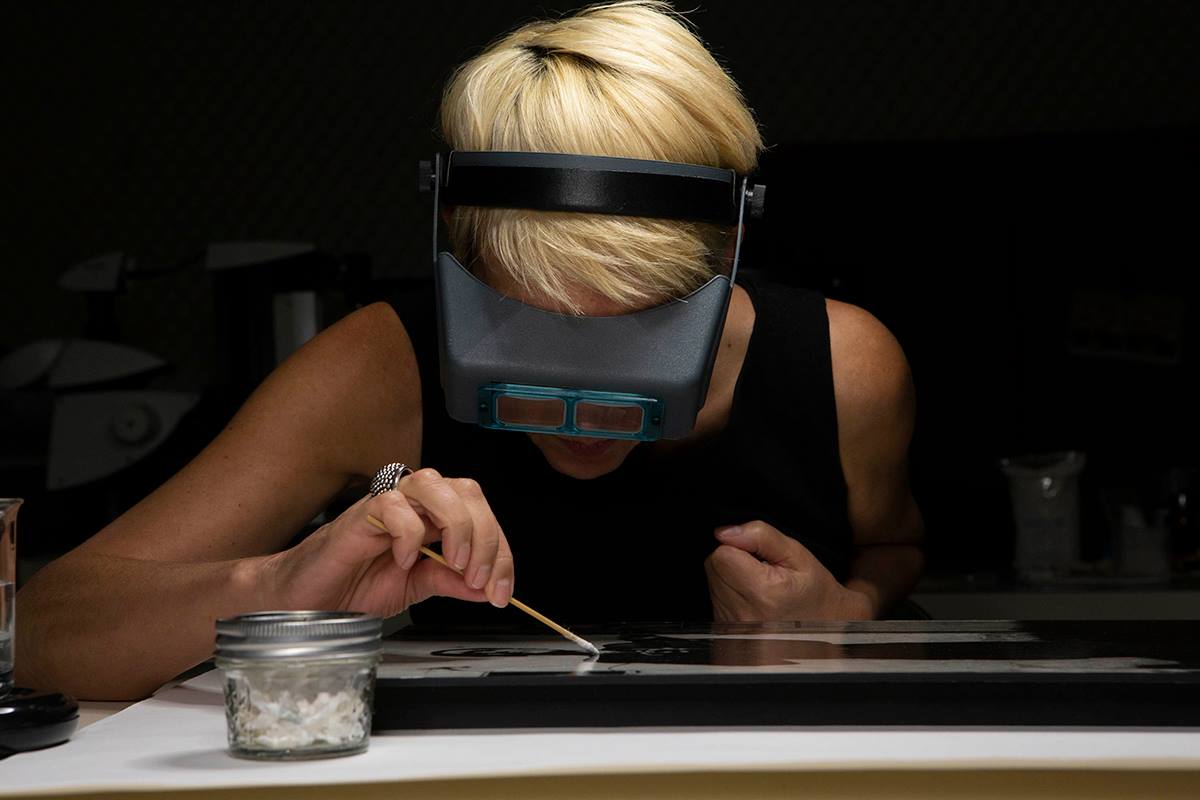Secrets of the Collection: Conserving Photographs
@ The Art Institute of Chicago, Price Auditorium
111 S Michigan Ave, Chicago, IL 60603
Opening Thursday, February 7th, from 12PM - 1PM
On view through Sunday, April 28th
Photograph conservator Sylvie Pénichon reviews the technical history of photographic processes from the 19th century to the present, as well as the related conservation and preservation issues that attend them.
This lecture highlights the special exhibition Conserving Photographs and kicks off a yearlong series of programs exploring the Art Institute’s collection through the eyes of conservators.
Persons with disabilities who would like to request an accessibility accommodation for an Art Institute program are encouraged to email access@artic.edu as far in advance as possible.
IMAGE: Photograph conservator Sylvie Pénichon with Matthew Witkovsky, Richard and Ellen Sandor Chair and Curator of Photography
—
ABOUT THE SHOW:
In the daily care of the Art Institute’s photography collection, photograph conservators take the utmost precautions.
Photographs are surprisingly delicate objects—vulnerable to damage sustained through improper handling, poor storage conditions, and even flaws inherent to their own chemistry. Art Institute conservators meticulously document a work’s condition; enact preventative measures to keep it safe while it’s stored, shipped, and displayed; and undertake scientific research to learn more about its material composition. When damage is evident, they carry out state-of-the-art treatments, effectively turning back the hands of time.
Since 1982, the Art Institute has maintained a world-class facility devoted to the examination, analysis, preservation, and conservation of photographs, including a cold-storage vault dedicated to color photographs—the first of its kind in a fine art museum. This exhibition invites visitors to travel behind the scenes of our cutting-edge conservation lab, revealing the numerous steps taken to care for and preserve the collection, which comprises approximately 24,000 objects, from early daguerreotypes to present-day digital prints and time-based media. Visitors are able to discover how structural and aesthetic integrity is restored to damaged works through microphotographs that uncover characteristic features of papers, artificially aged samples that illustrate the effects of light on dyes, and side-by-side copies of the same image that show the inherent shortcomings of certain processes and the benefits of proper storage conditions.
Through a wide selection of works from the museum’s collection that showcase the technical history of photographic processes from the 19th century to the present, as well as the related conservation, preservation, and connoisseurship issues that attend them, this unique presentation affords the rare opportunity to look at the collection through a conservator’s eyes and see photographs anew.
Official Website
More events on this date
Tags: Chicago, Conserving Photographs, Illinois, Loop, Price Auditorium, Secrets of the Collection, Secrets of the Collection: Conserving Photographs, Sylvie Pénichon, The Art Institute of Chicago

« previous event
next event »